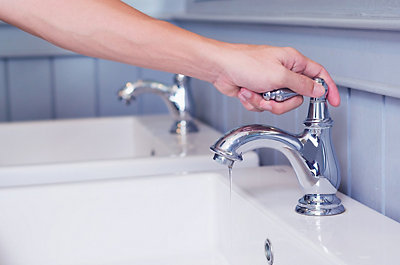Were you hunting for help and advice involving Should I Repair or Replace a Leaky Faucet??

Dripping taps could appear like a minor trouble, yet their impact exceeds simply the annoyance of the sound. From wasting water to sustaining unneeded economic costs and health and wellness dangers, overlooking a leaking faucet can cause various effects. In this write-up, we'll explore why it's critical to resolve this typical home concern quickly and successfully.
Wastage of Water
Environmental Influence
Dripping faucets add substantially to water wastage. According to the Environmental Protection Agency (EPA), a single faucet dripping at one drip per secondly can throw away more than 3,000 gallons of water per year. This not just stress water resources yet likewise affects ecological communities and wild animals dependent on them.
Financial Prices
Boosted Water Bills
Past the environmental effect, dripping faucets can blow up water expenses substantially. The gathered wastage gradually translates into greater energy costs, which can have been prevented with timely repair services.
Prospective Residential Or Commercial Property Damage
Furthermore, prolonged dripping can result in harm to components and surfaces surrounding the faucet. Water build-up can create discoloration, corrosion, and even structural problems if left unattended, leading to extra repair service prices.
Wellness Problems
Mold And Mildew and Mold Development
The consistent visibility of dampness from a trickling tap produces an excellent setting for mold and mold development. These fungis not just compromise indoor air high quality yet additionally present health dangers, especially for people with respiratory conditions or allergies.
Waterborne Diseases
Stationary water in dripping taps can become a breeding place for germs and other microorganisms, boosting the danger of waterborne diseases. Impurities such as Legionella bacteria prosper in stagnant water, possibly causing serious health problems when consumed or breathed in.
Do it yourself vs. Expert Repair
Benefits and drawbacks of DIY Repair
While some may attempt to repair a dripping faucet themselves, do it yourself fixings come with their very own set of difficulties. Without proper understanding and devices, do it yourself attempts can intensify the problem or cause incomplete fixings, extending the trouble.
Benefits of Working With a Specialist Plumber
Hiring an expert plumber makes sure that the underlying reason for the trickling faucet is dealt with efficiently. Plumbing professionals have the knowledge and equipment to detect and repair tap issues efficiently, conserving time and lessening the risk of further damages.
Step-by-Step Overview to Taking Care Of a Dripping Tap
Devices Required
Before trying to deal with a dripping faucet, gather the essential tools, consisting of an adjustable wrench, screwdrivers, replacement parts (such as washing machines or cartridges), and plumber's tape.
Usual Tap Issues and Their Solutions
Determine the type of tap and the details issue creating the drip. Common problems include worn-out washing machines, corroded valve seats, or defective O-rings. Describe supplier instructions or on the internet tutorials for detailed support on repair work.
Safety nets
Normal Upkeep Tips
To stop leaking faucets, carry out routine upkeep such as cleansing aerators, inspecting for leaks, and changing damaged components without delay. Additionally, consider mounting water-saving gadgets or upgrading to extra effective fixtures.
Relevance of Prompt Repairs
Dealing with trickling taps as quickly as they're seen prevents more water wastage and possible damage, ultimately conserving both water and money in the future.
Impact on Building Value
Understanding of Well-Maintained Property
Keeping a building in good condition, consisting of resolving maintenance problems like dripping faucets, boosts its perceived value and charm among possible buyers or lessees.
Influence on Resale Worth
Residences with properly maintained plumbing components, consisting of faucets, command greater resale worths in the real estate market. Addressing dripping taps can add to a favorable impact throughout property inspections and negotiations.
Environmental Duty
Specific Contribution to Conservation
Taking duty for dealing with leaking taps lines up with broader initiatives towards water conservation and ecological sustainability. Every individual's actions jointly make a considerable effect on maintaining valuable resources.
Lasting Living Practices
By prioritizing timely repairs and adopting water-saving practices, individuals add to sustainable living methods that benefit both existing and future generations.
Final thought
Addressing a trickling faucet exceeds mere convenience; it's a crucial action towards conserving water, lowering economic prices, and protecting health and wellness and building. Whether through do it yourself repair work or expert help, acting to fix leaking faucets is a little yet impactful way to advertise accountable stewardship of resources and add to a healthier, extra sustainable future.
How to Fix a Dripping or Leaky Faucet
A leaking faucet is one of the most common problems that homeowners encounter, but it being commonplace doesn’t make it any less annoying. The constant drip drip drip of a leaking bathtub faucet, showerhead, or sink tap can disturb your home’s serenity. Left neglected, a dripping faucet can also result in higher water bills and discoloration or mold growth in your sink or plumbing fixtures.
Fortunately, you don’t have to be a trained plumber to know how to stop a dripping faucet. With some basic tools, replacement parts, and a little patience, leaky faucet repair is a breeze. In this article, we’ll explain what causes dripping faucets and how you can fix them.
What Causes a Leaking Faucet?
Kitchen and bathroom faucets come in all manner of designs, but most involve some combination of valves, O-rings, seals, and washers. The O-ring is usually the weakest link, but any one of these pieces can wear down over time. Heat, moisture, temperature fluctuations, minerals, mold, and movement can contribute to warping and corrosion, breaking the watertight seal. This just comes with the territory of being a homeowner. Everything is always subject to wear and tear, and some component parts of your appliances and fixtures need to be replaced on occasion. At least replacement O-rings are cheap!
More rarely, dripping faucets can be a symptom of excessively high water pressure. Were this the case in your home, you would probably notice that the leak is not isolated to one faucet. Water pressure issues are harder to resolve on your own. We recommend contacting a professional plumber if you suspect your water pressure is too high.
How to Fix a Dripping Faucet
Pipe wrench or monkey wrench Allen wrench set Screwdrivers Old towel or rag Shut off the water.
Before you do anything, you need to turn off the water to keep from drenching your kitchen or bathroom. You should find a valve under the sink and against the wall. Once you’ve turned this valve, try turning the faucet on to confirm that the water source has been cut off.
If you can’t locate your local valve for the faucet you’re working on, you can always shut off the water to the house at the main valve. Of course, this will prohibit anyone from using the sinks, showers, or toilets while you’re working on the faucet that’s giving you trouble.
Plug or block the drain.
You’ll be disassembling the faucet and removing some small bits of hardware. Plug the drain with a stopper or rag to avoid the possibility of a small screw falling into your P-trap.
Take apart the faucet assembly.
There are several varieties of kitchen and bathroom faucets, each with its own manner of assembly. For detailed instructions on how to disassemble your faucet, you can refer to the fixture’s manual or contact the manufacturer. If you know whether you have a ball, disc, cartridge, or compression faucet, you can find detailed schematics online.
In general, you need to begin by removing the faucet handles. You might notice a small screw that you’ll need to remove with a screwdriver or Allen wrench. If you don’t see any visible securing hardware, it’s likely hidden under a decorative cap that can be unscrewed or popped off with flathead screwdriver.
Remove each piece methodically, consulting a schematic when necessary. Take notes or arrange the pieces in such a way to make it easier to correctly reassemble the faucet later.
Remove the cartridge.
Once you’ve removed the handles and securing hardware, you should be able to remove the valve cartridge or stem. Some cartridges will slide right out. Other faucet models will require you to loosen a nut with a pipe wrench before you can remove the valve stem.
Examine the exposed hardware.
With the cartridge or stem removed, inspect the component parts. Check the rubber O-rings for wear and tear. Also examine the seat washer for corrosion or other damage. These pieces are usually the responsible parties for a dripping faucet, but it’s worth inspecting the other component parts while you have the faucet disassembled.
Find replacement parts.
Once you’ve identified which faucet component has failed, find an identical replacement. Your local hardware store should have O-rings, seat washers, and other standard components in stock. If you have a luxury or uncommon faucet, you may have to contact the manufacturer for a replacement part.
It’s a good idea to take your old parts with you to the hardware store so you can compare them with the store’s inventory and be sure you’re purchasing the correct replacement.
Reassemble the faucet.
With your new parts in hand, reconstruct the faucet and handles. Don’t be tempted to overtighten screws or nuts. You might think this could create a better seal, but it can instead damage or bend a delicate part of the assembly and create a new problem for you.
Turn on the water and test the faucet.
The only thing left to do is test your work. Unplug the sink, turn the water back on, and try the faucet. Congratulate yourself on a job well done!
https://www.libertyhomeguard.com/how-to-fix-a-dripping-or-leaky-faucet/

I found that post about Why It's Important to Fix Leaky Faucets while doing a search on the search engines. If you enjoyed our page kindly don't forget to pass it around. Thank you so much for going through it.
 Kelly McGillis Then & Now!
Kelly McGillis Then & Now! Lark Voorhies Then & Now!
Lark Voorhies Then & Now! Michael J. Fox Then & Now!
Michael J. Fox Then & Now! Robbie Rist Then & Now!
Robbie Rist Then & Now! Jane Carrey Then & Now!
Jane Carrey Then & Now!